This post may contain affiliate links. Please see our disclosure policy.
Apricot Pie filling is one sweet way to preserve a bumper crop of apricots in season, and it’s perfect in more than just homemade pies! Use it to top ice cream, coffee cake, yogurt and more!
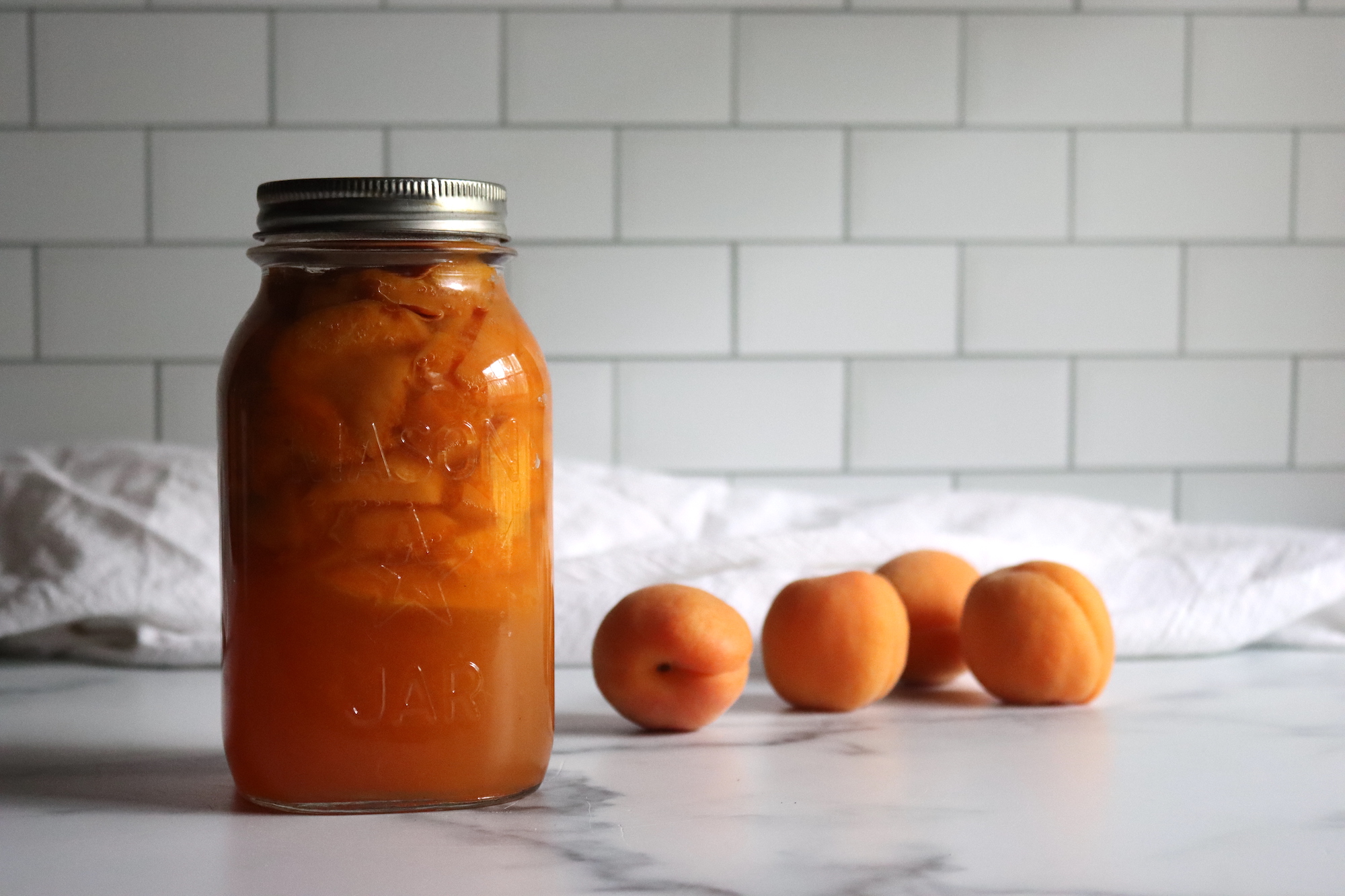
Apricots are one of those beautifully short-lived fruits, and it can be tricky to preserve them in time. They store for 4 to 5 days in the refrigerator and ripen quickly when left at room temperature. Every year, my mom calls me and tells me she’s buried in apricots from her backyard tree, and every year, I send her new apricot canning recipes to try.
This simple recipe for home-canned apricot pie filling is perfect because the fruit filling is ready to go right out of the jar, and it’s easy to make at home.
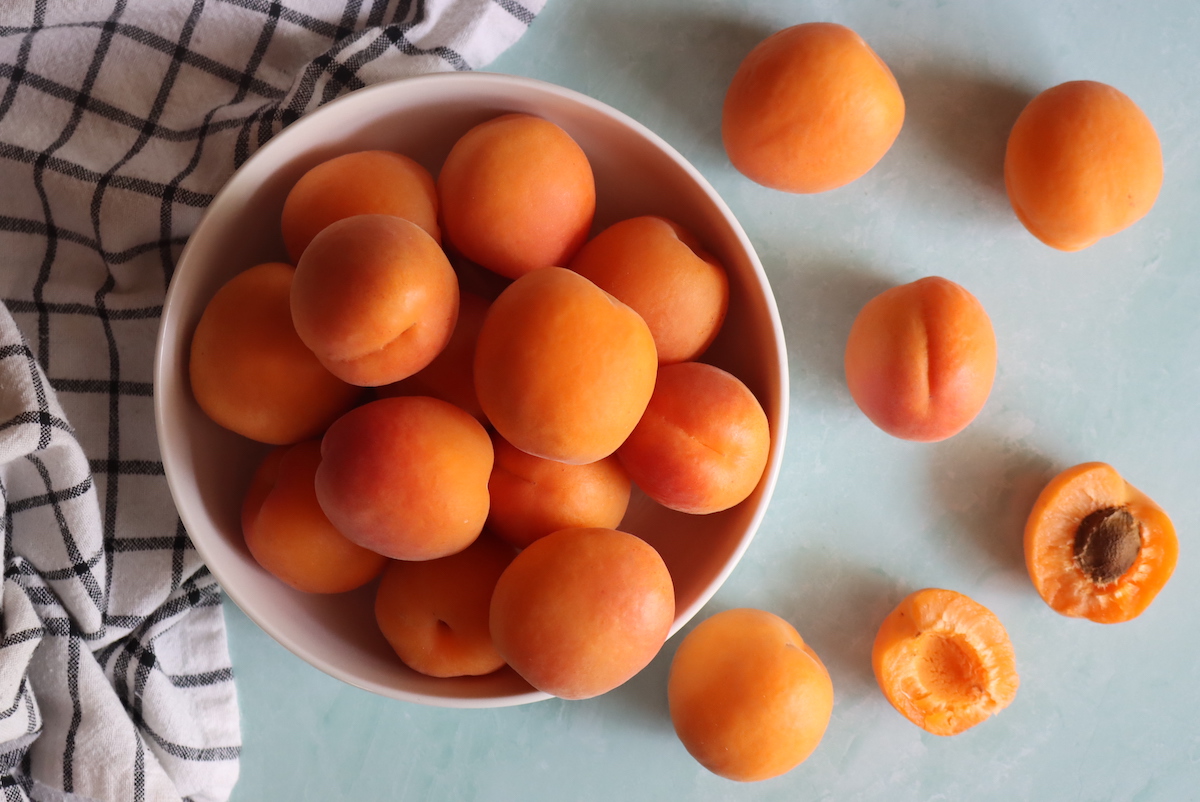
Ingredients for Canning Apricot Pie Filling
For the very best pie filling, be sure to select apricots that are firm, fragrant, and ripe. Spices and extract are optional.
To yield a single quart of apricot pie filling, the necessary ingredients are as follows:
- 3 ½ cups of cleaned, sliced apricots
- 1 cup granulated sugar
- ¼ cup plus 1 tablespoon Clear Jel
- ¾ cup cold water (or juice)
- ¼ cup bottled lemon juice
- ⅛ teaspoon of spices, such as cinnamon (optional)
- ⅛ teaspoon almond extract (optional)
For a full 7-quart canning batch, you will need:
- 6 quarts of cleaned, sliced apricots
- 7 cups granulated sugar
- 2 cups plus 3 tablespoons Clear Jel
- 5 ¼ cups cold water (or juice)
- 1 ¾ cups bottled lemon juice
- 1 teaspoon of spices, such as cinnamon (optional)
- 1 teaspoon almond extract (optional)
Be sure to select the regular type of Clear Jel, not instant. Instant Clear Jel is not suitable for this recipe and cannot be substituted. For reference, one pound of Clear Jel equals about 3 cups.
Additionally, be sure to use bottled lemon juice, not fresh, to ensure canning safety. The acidity of bottled lemon juice is regulated while fresh lemons may vary.
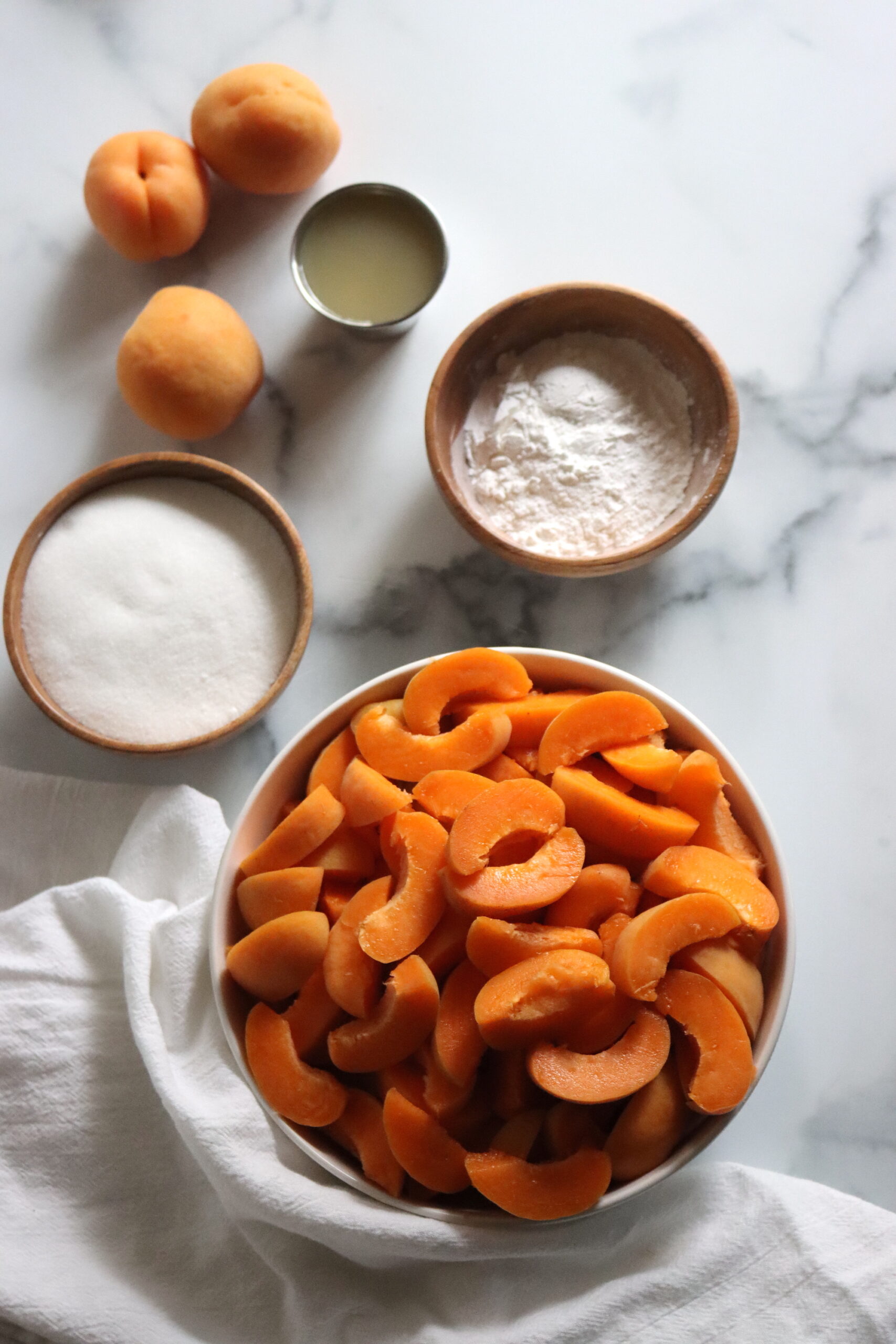
Altering the Canning Recipe for Apricot Pie Filling
You may wish to adapt the spices and flavoring added to your pie filling, such as substituting nutmeg or ginger for cinnamon. This is perfectly fine. The sugar and spices used in this recipe may be adjusted to fit individual tastes.
A few things, however, cannot be altered. You cannot substitute any other starch for Clear Jel. Regular flour, cornstarch, or tapioca starch do not meet the standards needed for canning safety. These starches may clump and prevent heat from reaching throughout all parts of the jar, resulting in lingering bacteria.
Clear Jel is the only approved starch for canning safety. Additionally, you cannot decrease the amount of lemon juice from that stated in the recipe. Lemon juice ensures the safety and stability of preserved pie filling. You may, however, increase lemon juice for more tartness or decrease Clear Jel to ¼ cup per quart for a looser set pie filling.
How to Can Apricot Pie Filling
Begin by preparing lids, jars, and a water bath canner.
Peeling the apricots is optional, and unlike peaches, the peels of apricots soften and almost disappear in the canner. I personally don’t peel them for canning, but it’s up to you.
If peeling, the quickest and easiest way of doing this is to flash-cook the fruit. Bring a pot of water to boil and submerge the apricots for 30 to 60 seconds, then remove and place in cold, icy water for 20 seconds. Once removed, the skins should peel off more easily.
Cut apricots into ½ thick slices. Bring a few quarts of water to a boil and add the sliced apricots. After returning to boil, cook for 60 seconds. Remove with a slotted spoon and place them in a covered bowl or pot to hold in the heat.
On to the pie filling mixture! Combine cold water (or juice), Clear Jel, sugar, spices and extract. Whisk or stir to completely dissolve the Clear Jel. This step is important. The Clear Jel must be entirely dissolved before you begin to heat the mixture or clumps will form.
When dissolved entirely, set to medium-high heat and stir continually as the mixture thickens. Once bubbling, add in the lemon juice and boil for one minute, continuing to stir or whisk the whole time.
After boiling for one minute, remove from heat and fold in drained, blanched apricots.
Immediately, fill prepared jars with the mixture, leaving 1 inch headspace. De-bubble, since the filling will be thick. Wipe rims with a clean cloth to remove any residue and apply 2-part canning lids until fingertight.
Process in a water bath canner for 30 minutes, increasing the time as needed for your altitude.
Once processing time has finished, turn off the water bath canner and allow jars to sit for another 10 minutes. This will reduce the risk of siphoning (which can be quite the mess).
Remove with a jar lifter and place atop a towel-covered surface to cool. Check seals after 12 to 24 hours and store any unsealed jars in the refrigerator for prompt consumption.
Jars that have been properly canned and sealed will maintain peak quality for one year. Refrigerate after opening.
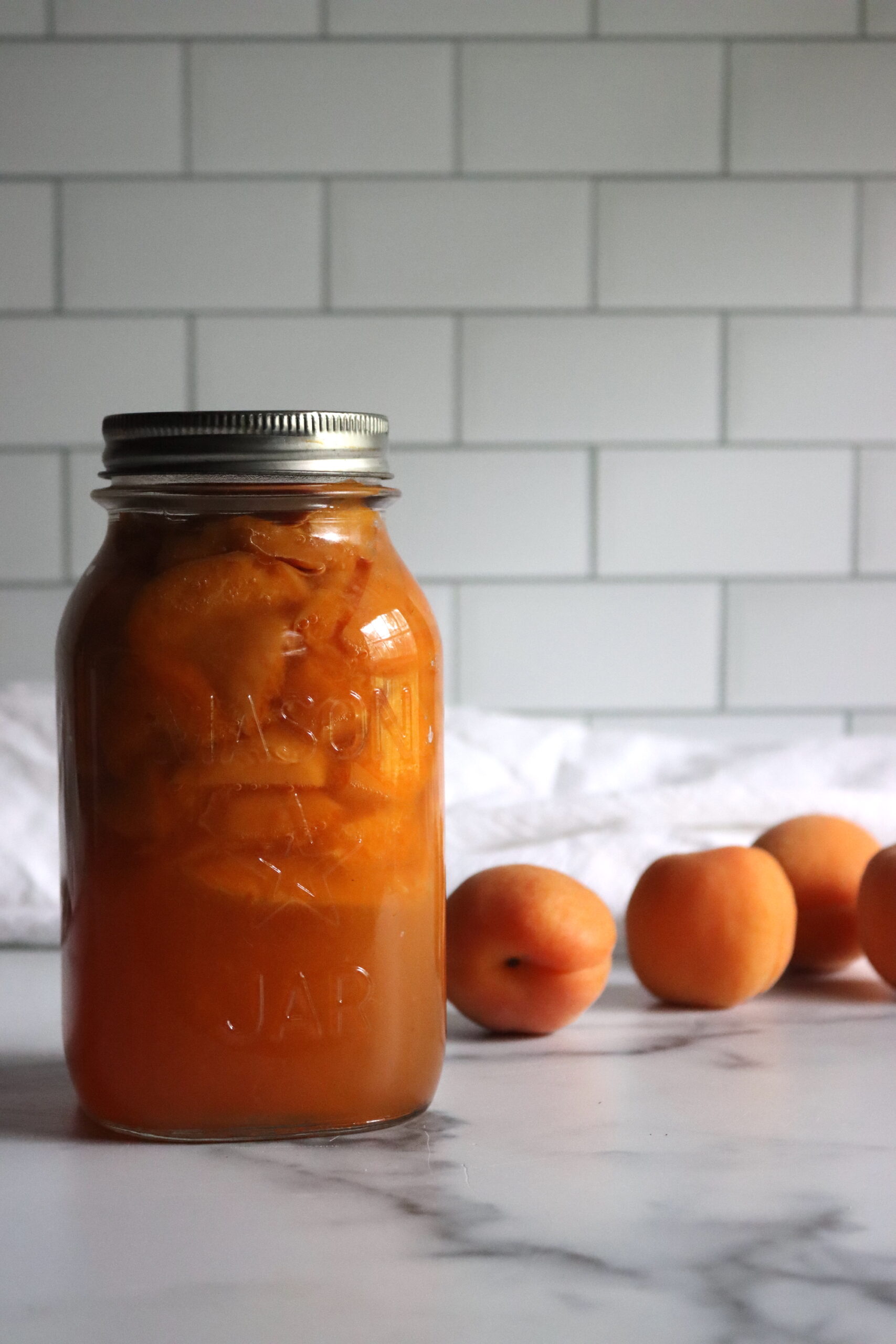
Altitude Adjustments for Canning Apricot Pie Filling
Corresponding altitude adjustments are as follows:
- 0 to 1,000 Feet in Elevation: 30 minutes
- 1,001 to 3,000 Feet in Elevation: 35 minutes
- 3,001 to 6,000 Feet in Elevation: 40 minutes
- Above 6,000 Feet in Elevation: 45 minutes
Juice or Water for Canning Liquid?
You may wish to substitute some of the cold water used in this pie filling recipe with apricot juice.
If using frozen apricots, juice can be collected by placing a bowl beneath the colander in which the fruit is thawing in. Another method can be to save the liquid that you have blanched or boiled your apricots in – although you will need to chill it properly so that it is cool when added to the mixture.
You can extract apricot juice from fresh fruit with the help of a countertop juicer or as outlined in this jelly-making recipe. In this method, you can make use of both the apricots and peels, boiling the fruit and scraps in a small amount of water and breaking them up with a wooden spoon or potato masher. Next, you’ll strain through a jelly bag or a few layers of cheesecloth. This should be done ahead of time, of course.
Try substituting half of your cold water with apricot juice for the tastiest pie fillings.
Using Apricot Pie Filling
Apricot pie filling is delicious when used in pies, cobblers and baked fruit crumbles, but still more uses exist!
Not only can you spoon this pie filling atop pancakes, waffles, or ice cream – it can be used as a cake filling or over cheesecake and chilled pies.
Pie filling like peach and apricot can be swirled into a coffee cake topped with sliced almonds and sugared drizzle. Apricot pie filling can be blended with condensed milk and heavy cream to make a no-churn ice cream.
Or simply, grab some pie filling and pour over gelato or sorbet for a personal stone fruit sundae.
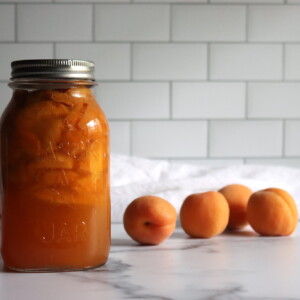
Canning Apricot Pie Filling
Equipment
Ingredients
For a Single Quart:
- 3 ½ cups apricots, cleaned and sliced
- 1 cup granulated sugar
- ¼ cup + 1 Tbsp. Clear Jel
- ¾ cup cold water, or juice
- ¼ cup bottled lemon juice
- ⅛ tsp spices, such as cinnamon (optional)
- ⅛ tsp almond extract, optional
For a 7 Quart Canner Batch:
- 6 quarts apricots, cleaned and sliced
- 7 cups sugar
- 2 cups plus 3 tablespoons Clear Jel
- 5 ¼ cups cold water, or juice
- 1 ¾ cups bottled lemon juice
- 1 tsp spices, such as cinnamon (optional)
- 1 tsp almond extract, optional
Instructions
- Prepare, jars, lids, and water bath canner.
- Peeling the apricots is optional, but if you want to peel them, you can get it done quickly by flash-cooking the fruit. Submerge in boiling water for 30 to 60 seconds, remove and immediately place in cold or icy water for 20 seconds. Peels should remove easily.
- Remove the seeds and cut peeled (or unpeeled) fruit into ½ inch thick slices.
- Bring a few quarts of water to a boil. Blanch the apricots by boiling for one minute and removing with a slotted spoon. Drain and place in a covered bowl or pot to keep warm.
- In a fresh pot (large enough to hold all ingredients and fruit), combine cold water (or juice), sugar, Clear Jel, spices and/or extract. Stir or whisk to fully incorporate – the Clear Jel must be fully dissolved before moving on to the next step.
- Once entirely dissolved, set heat to medium-high and stir continuously as the mixture thickens. Wait until bubbling and add lemon juice. Boil for one full minute while stirring constantly.
- Remove from heat and fold in warm, drained apricots. Ladle into prepared canning jars, leaving 1-inch head space (be sure to de-bubble pie filling as it will be thick).
- Clean rims of residue, apply 2-part canning lids, and process in a water bath canner for 30 minutes, adjusting time as needed for altitude.
- After processing time is complete, turn off the water bath canner and allow jars to rest for another 10 minutes to help prevent siphoning. Remove with a jar lifter and place atop a towel.
- Check seals after 12 to 24 hours. Any unsealed jars should be moved to the refrigerator to be used promptly.
Notes
- 0 to 1,000 Feet in Elevation: 30 minutes
- 1,001 to 3,000 Feet in Elevation: 35 minutes
- 3,001 to 6,000 Feet in Elevation: 40 minutes
- Above 6,000 Feet in Elevation: 45 minutes
Nutrition
Nutrition information is automatically calculated, so should only be used as an approximation.
Ways to Preserve Apricots
Still have more apricots to preserve? Fear not – there are plenty of ways to preserve these fleshy and sweet stone fruits.
Apricot jam is a surefire method of ensuring apricots don’t go to waste. This jam can be spread on muffins, toast, or used in cookies and baked treats.
Use surplus apricots to make fruit butter, fruit vinegar, or even fruit wine.
Still too many fruits laying about? Leave no apricot un-canned – preserve this precious produce by slicing and canning apricots. Out of pantry space? Excess apricots can be frozen to be thawed and used in the future or preserved later in the year through these various methods.
Whether starting from fresh or frozen apricots won’t matter, especially if you’re making pie filling for home canning.
Home Canned Pie Fillings
Hungry for more home-canned pie filling recipes?
- Canning Apple Pie Filling
- Canning Blackberry Pie Filling
- Canning Peach Pie Filling
- Canning Cherry Pie Filling
Fruit Canning Recipes
Apricots won’t be the only item you’ll want to stock up on this fruit season. Plenty more fruit canning recipes await you!
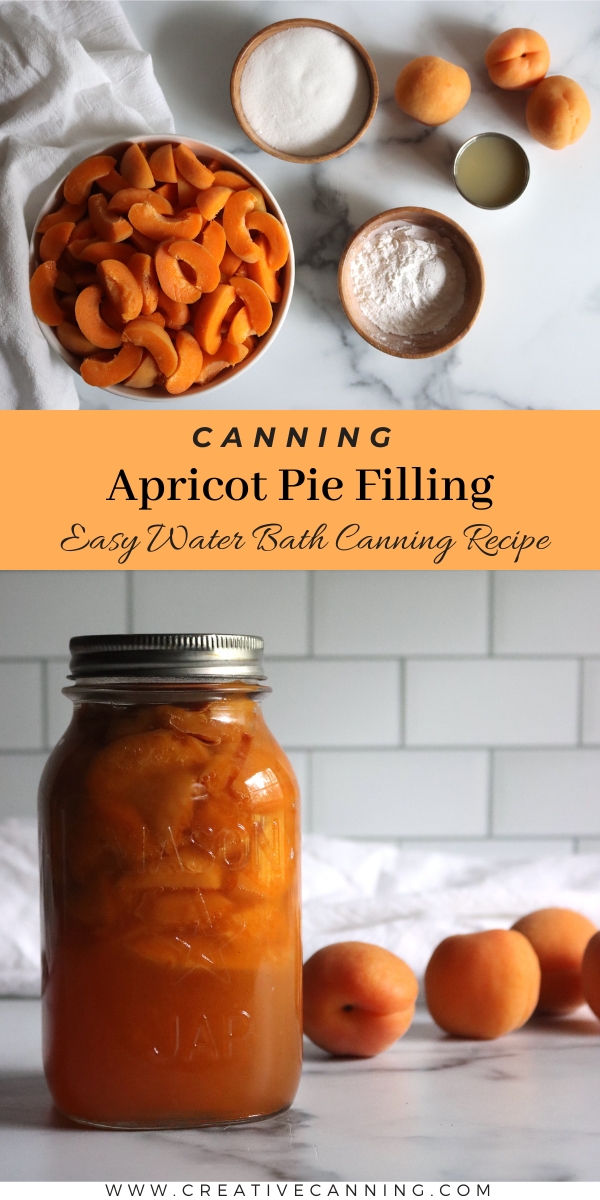
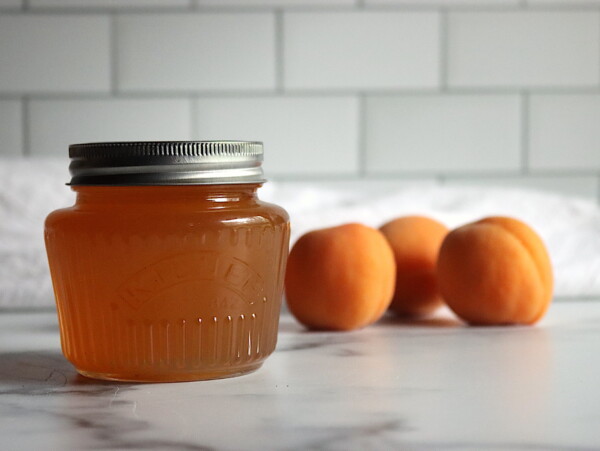
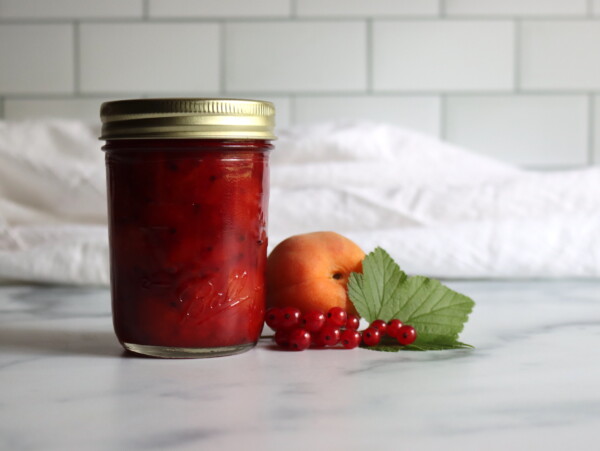
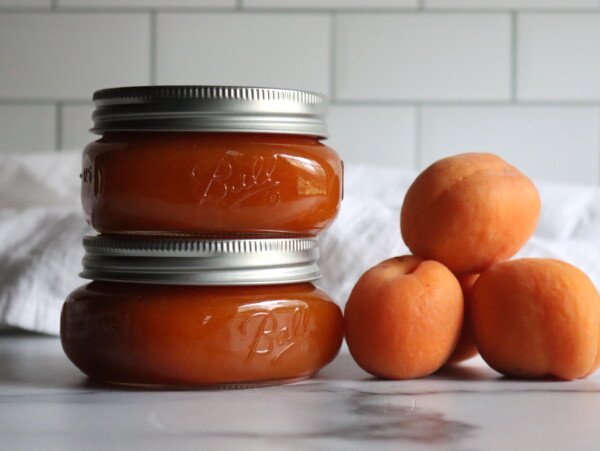
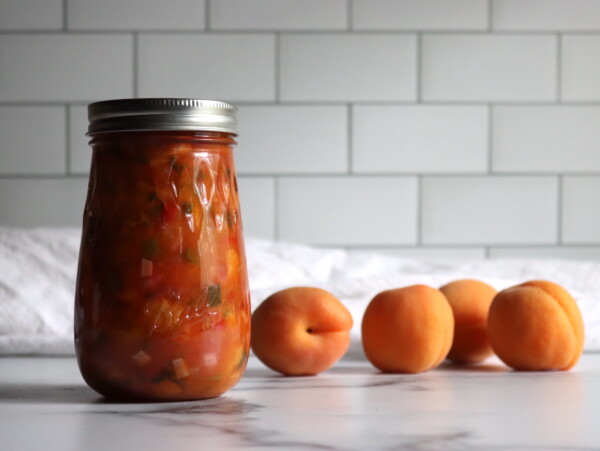
This comes out a bit like peach pie filling, as you’d expect, but the flavor of apricots is so much more intense! I absolutely love it!